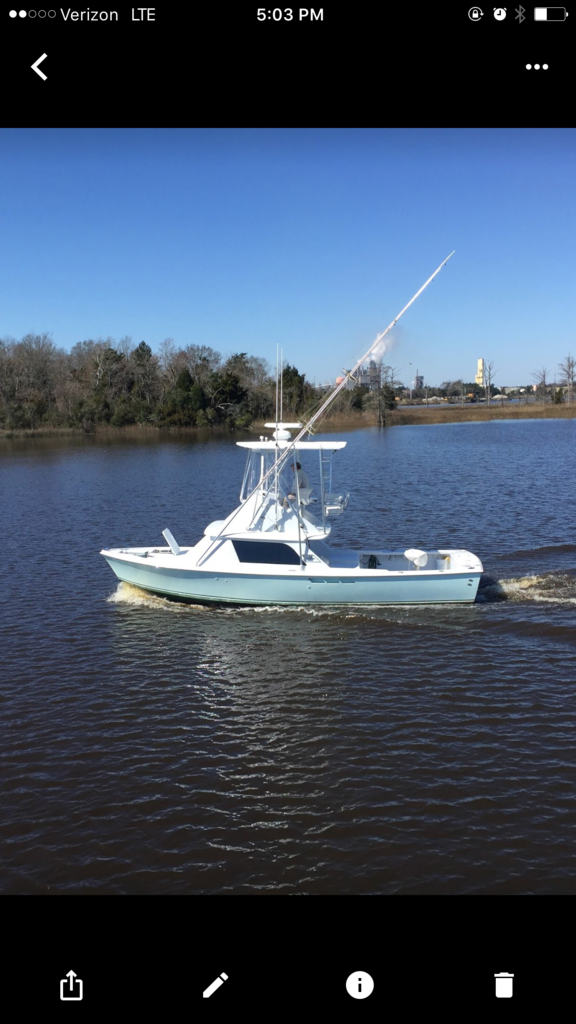See if this link helps you, it is a PDF from Lee.
http://leetackle.com/GuideMXOutriggers.pdf
1. Determine the angle at which you wish to mount the main tube. An angle meter is
useful for selecting an angle that complements the lines of your boat, such as the
angle of your windshield, fly bridge or tower leg. It also helps to match the angle
of one outrigger to the other.
The recommended angle is 35 degrees off the vertical. If you angle the outrigger
too far back, it will decrease the amount of height and spread you will have in the
fishing position. Rake-back angles greater than 45 degrees are not recommended.
If you choose to angle the outriggers beyond 40 degrees, you can partially
compensate for the loss of spread by mounting the base of the back-brace lower
than the base of the main tube. This will cause the outrigger to swing forward
slightly when lowered to the fishing position. This does not compensate for the
loss of height.
When mounting the main tube the general rule of thumb for a sportfishing yacht is
to have the tips of the outriggers even with or slightly overhanging the stern. The
approximate location forward of the stern, for a rake-back angle of 35 degrees, is
found by dividing the overall length of the outrigger by two and adding 15% of
this number. For example, for an overall length of 30 feet the position of the base
would be 15 plus 2.25 feet forward. The upper portion of the main tube should be
in a position where the captain will have easy access to it because this is where
the standoff will usually be mounted. When you are sure the outrigger is at the
proper angle, in the position where it will operate properly and not interfere with
anything, then mount the base of the main tube. The base should be mounted on
the cabin wall or it can be mounted on the gunnels. Make sure that the bolt in the
base is horizontal.
2.
